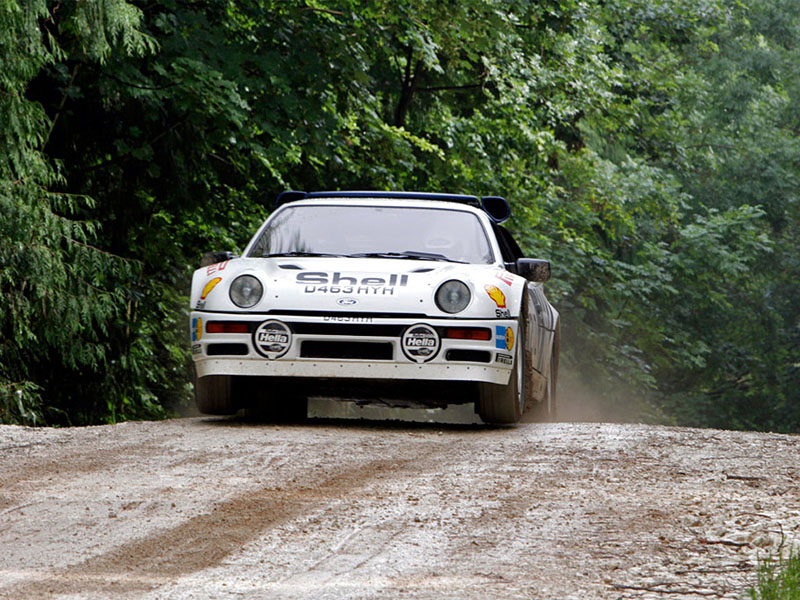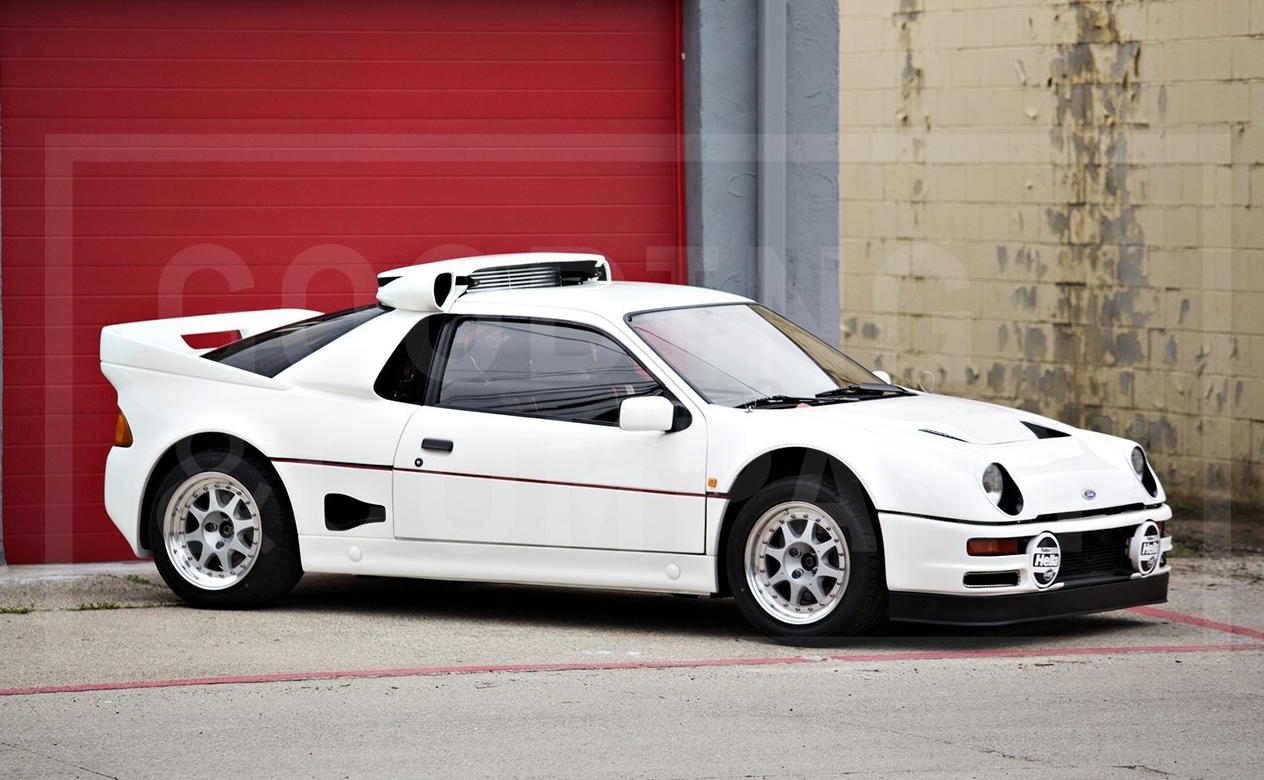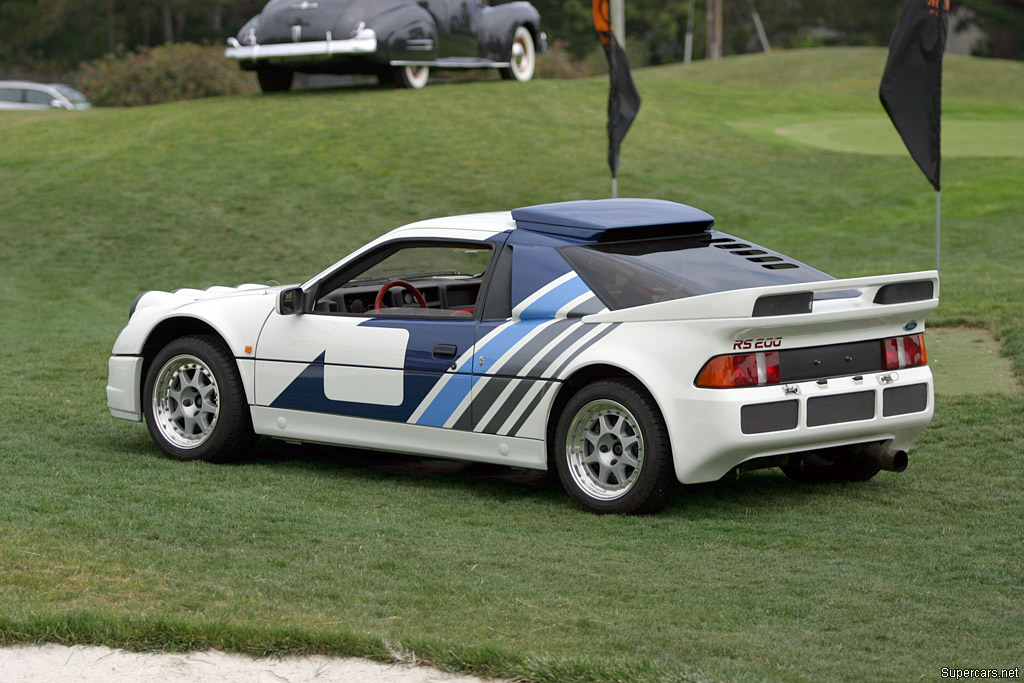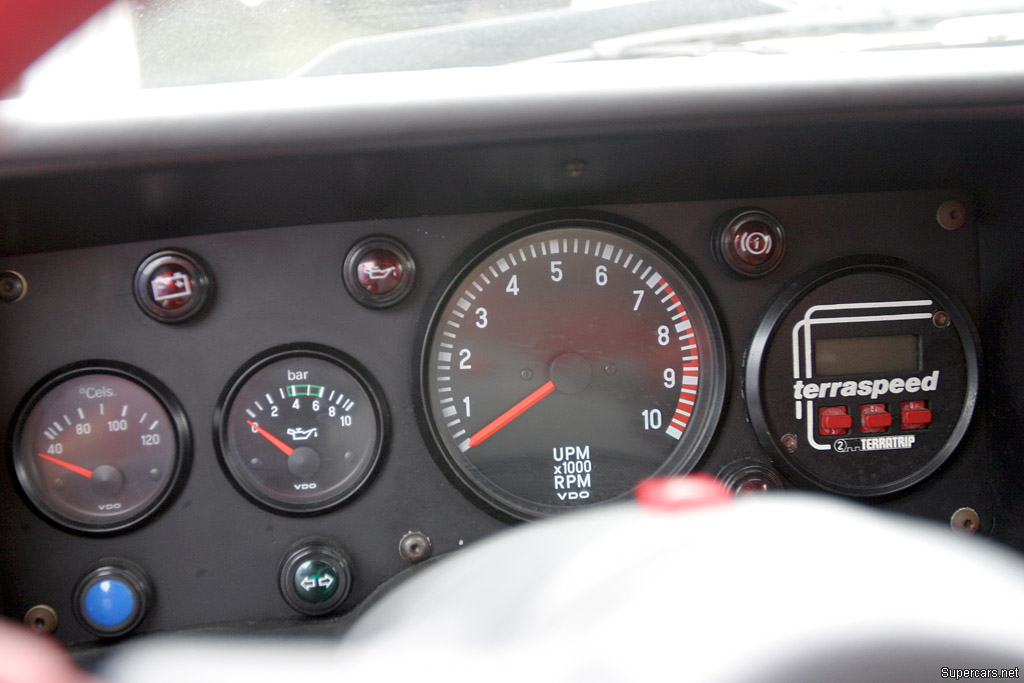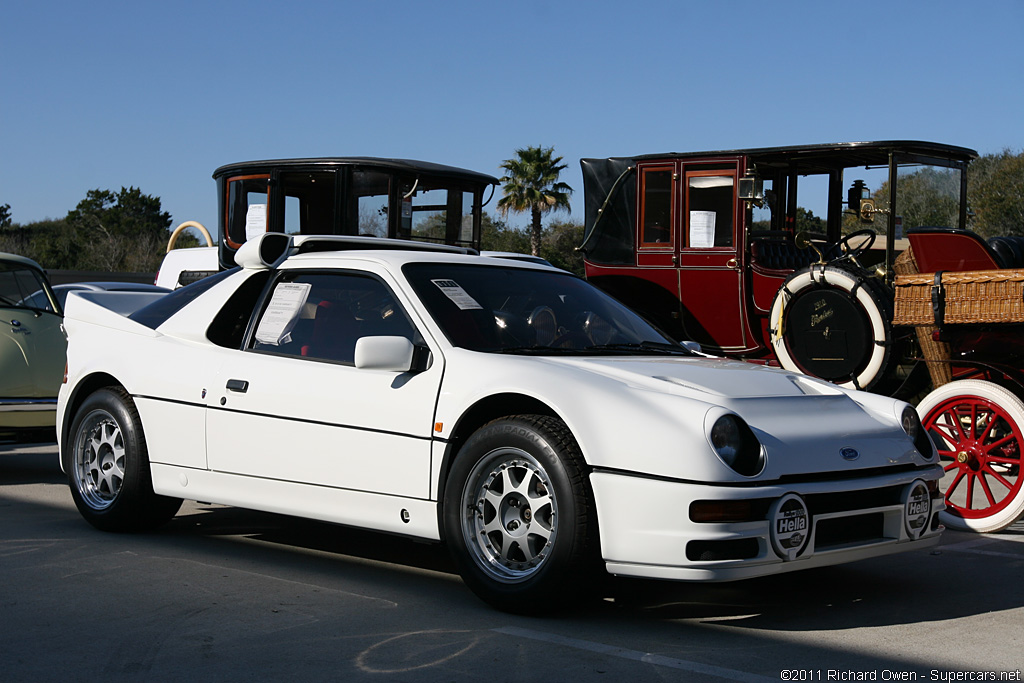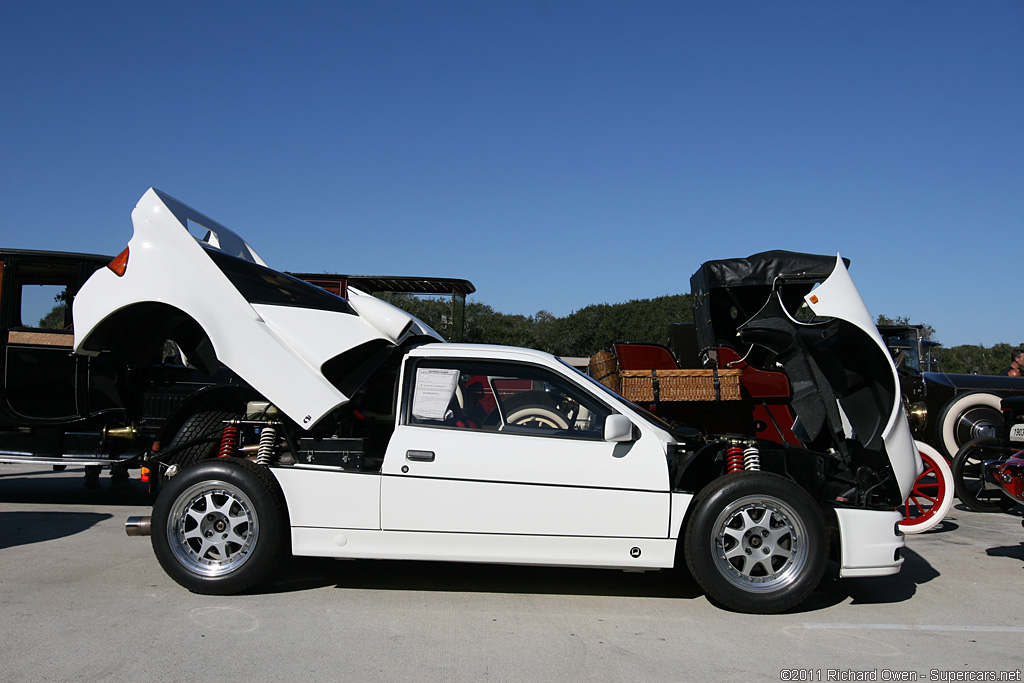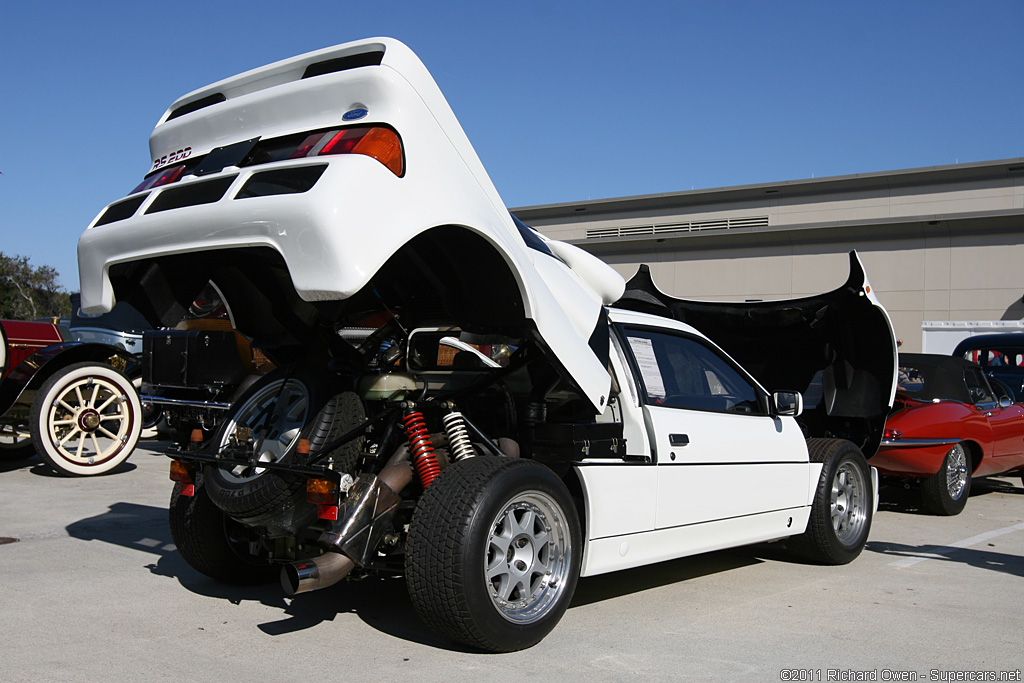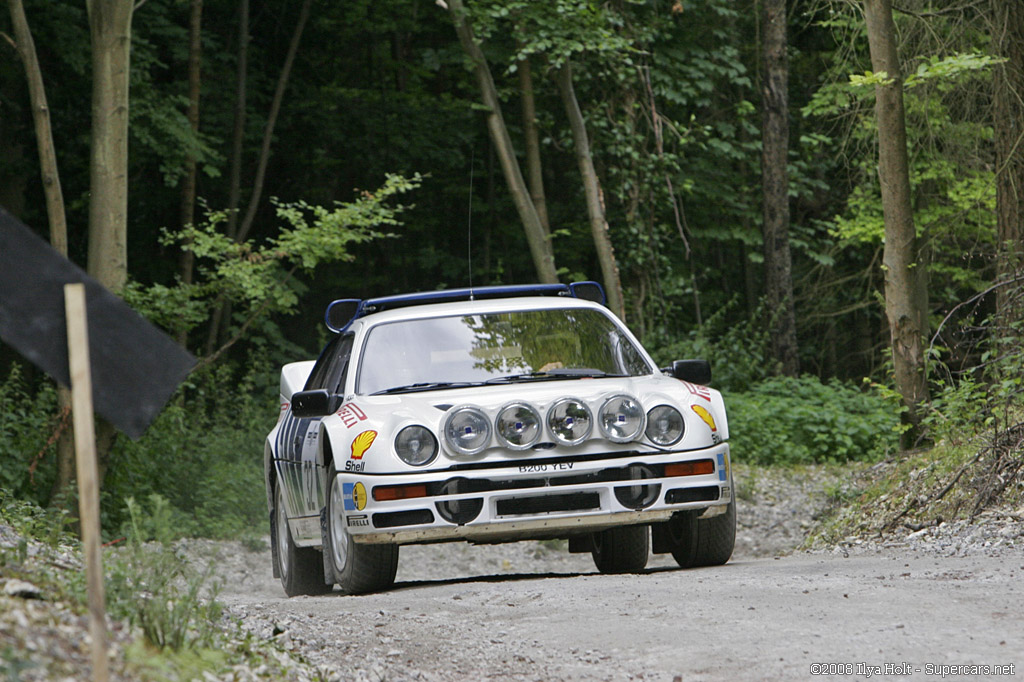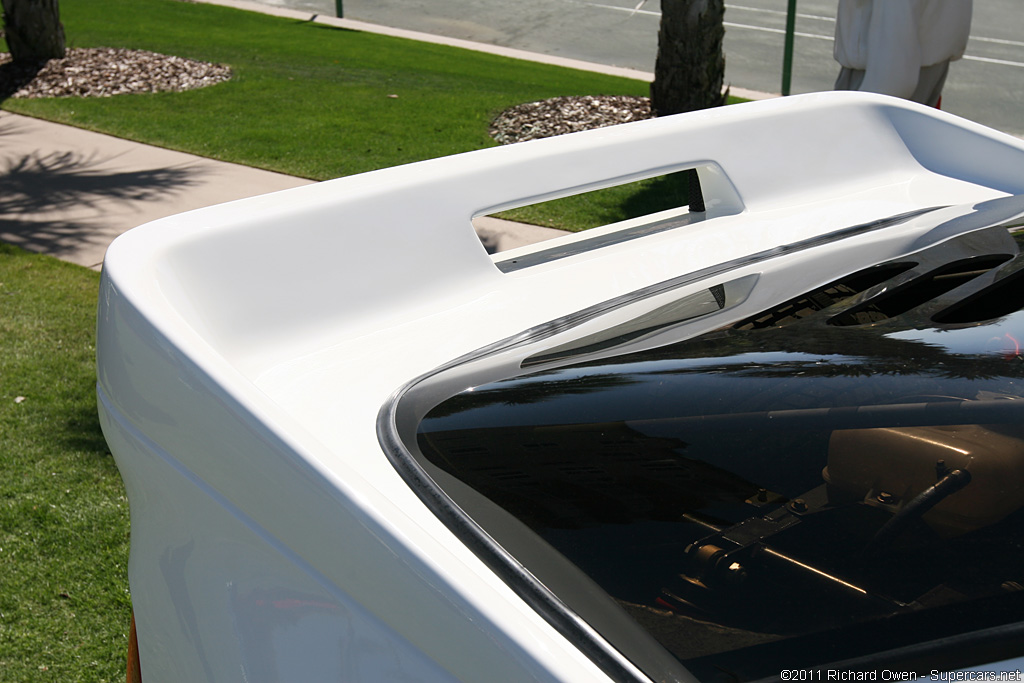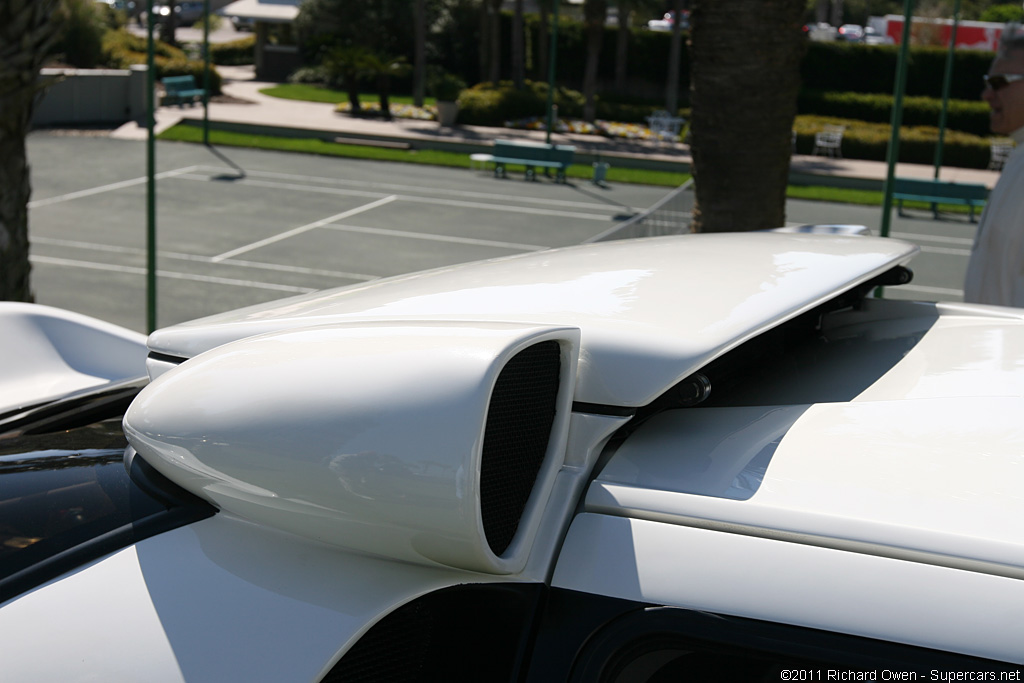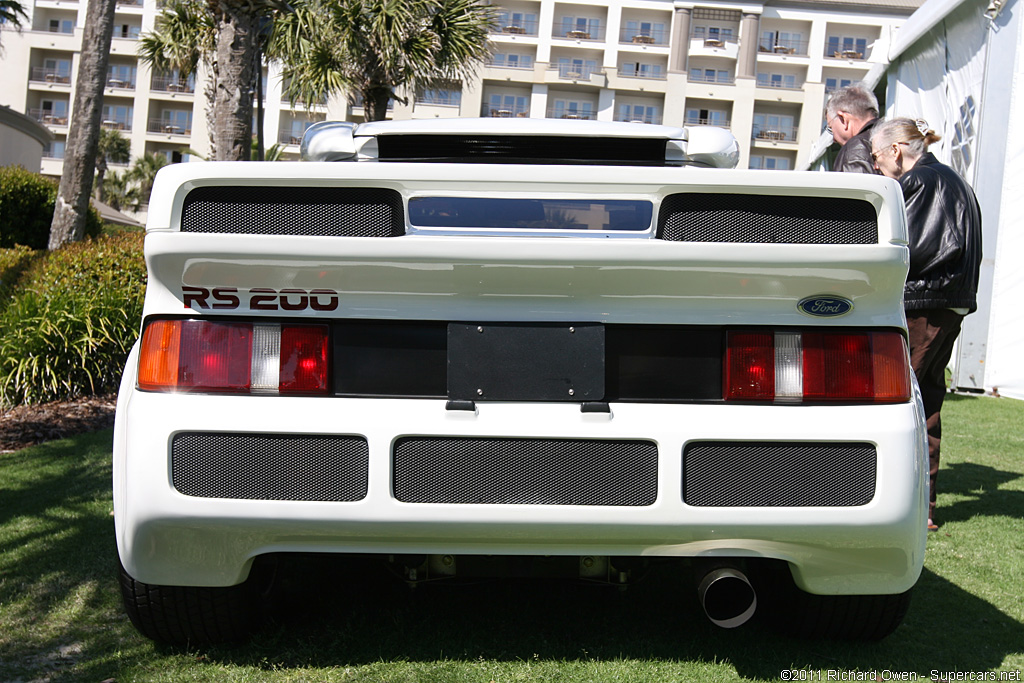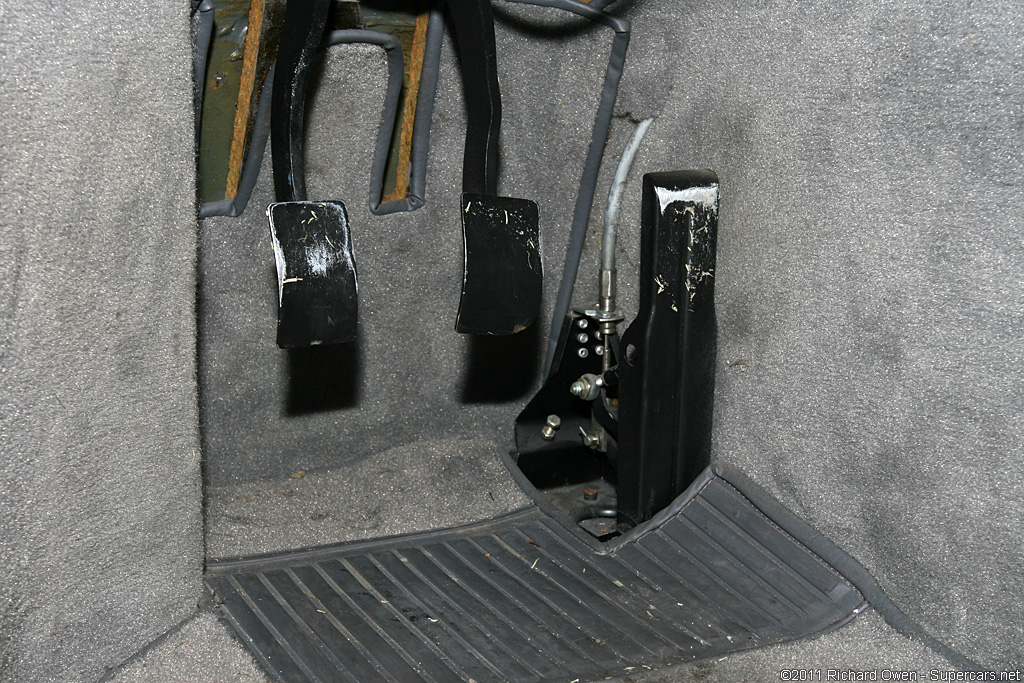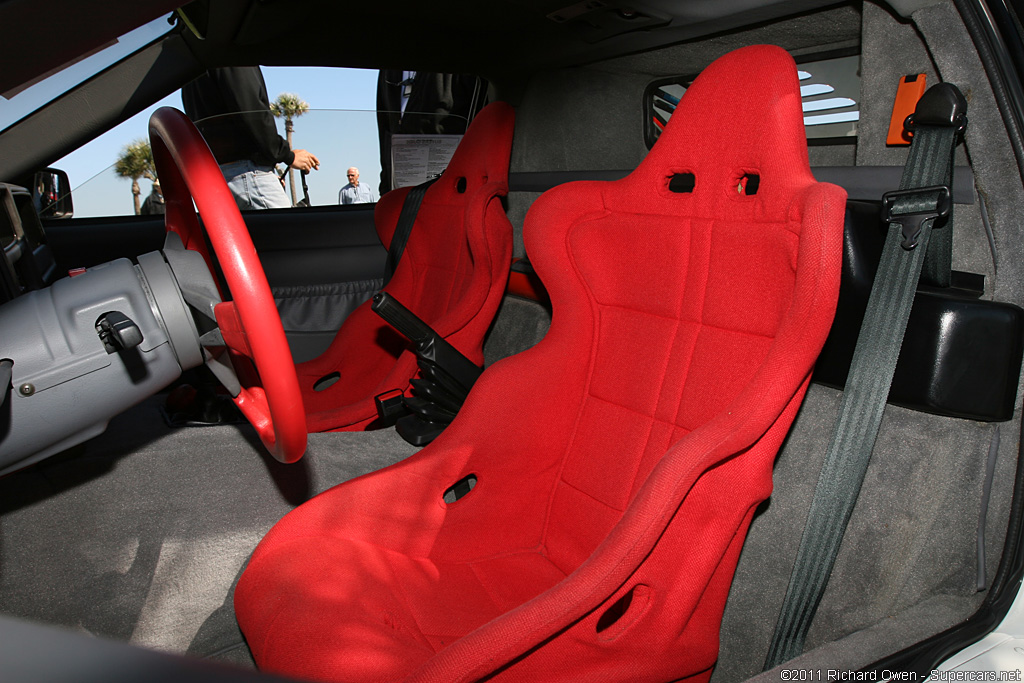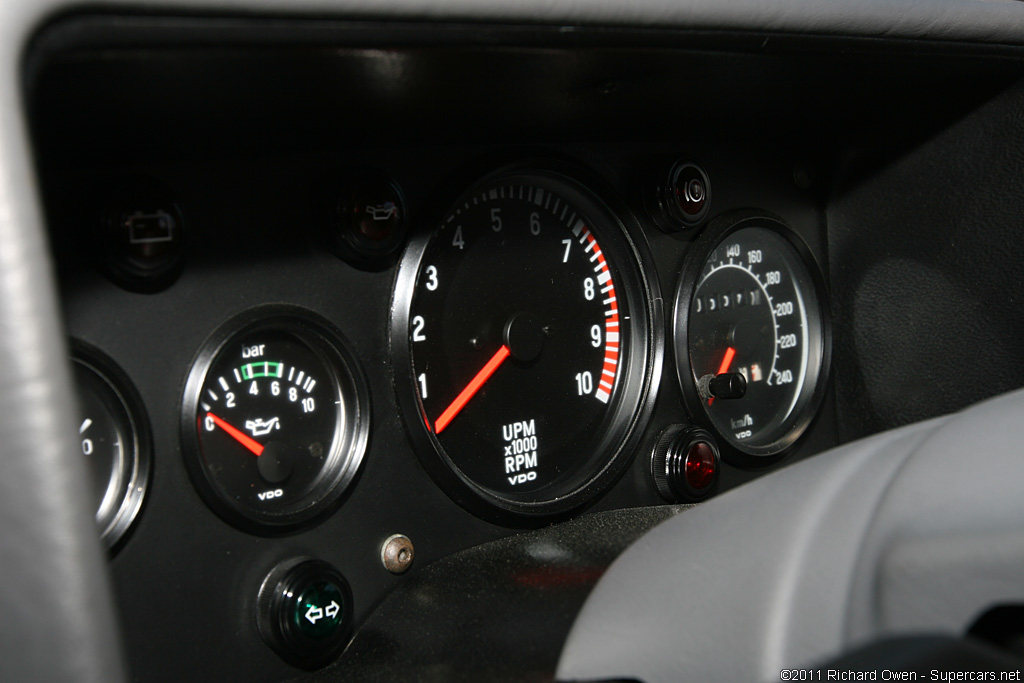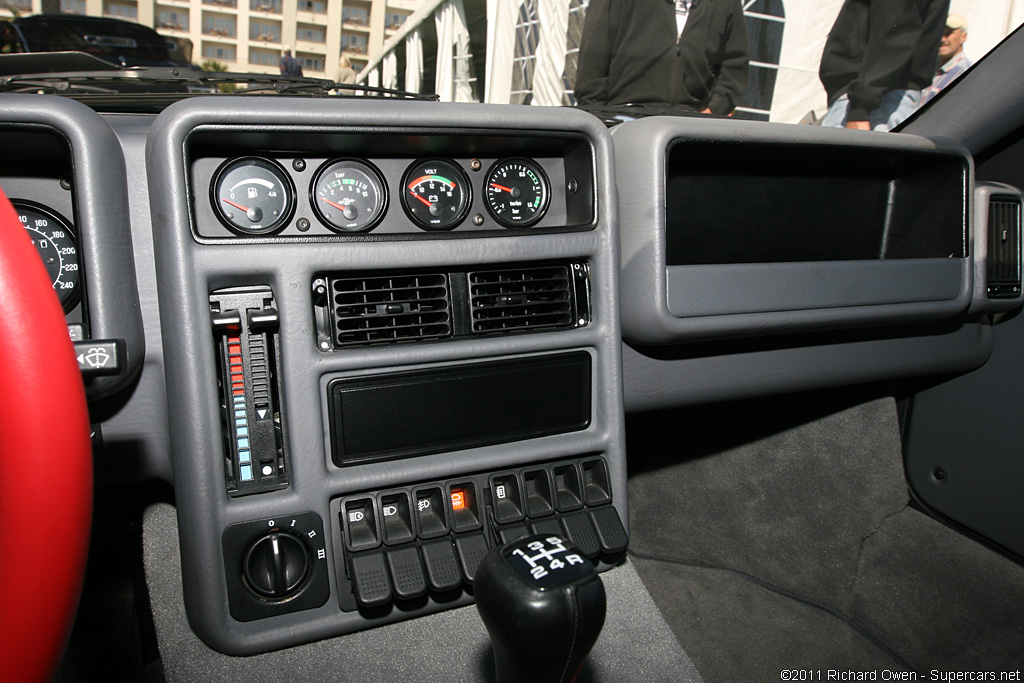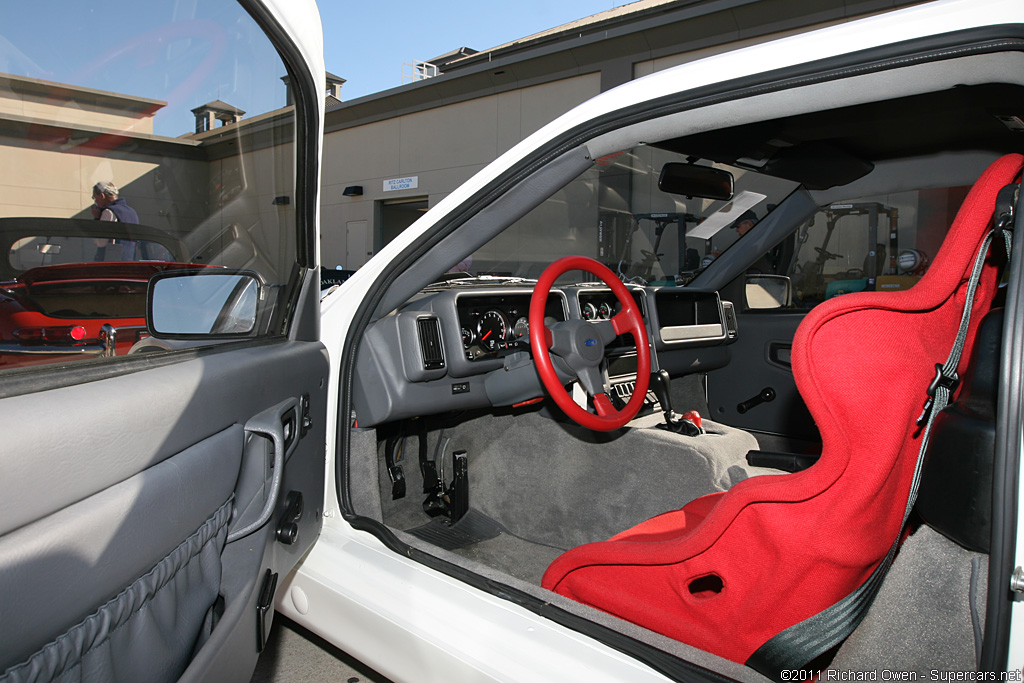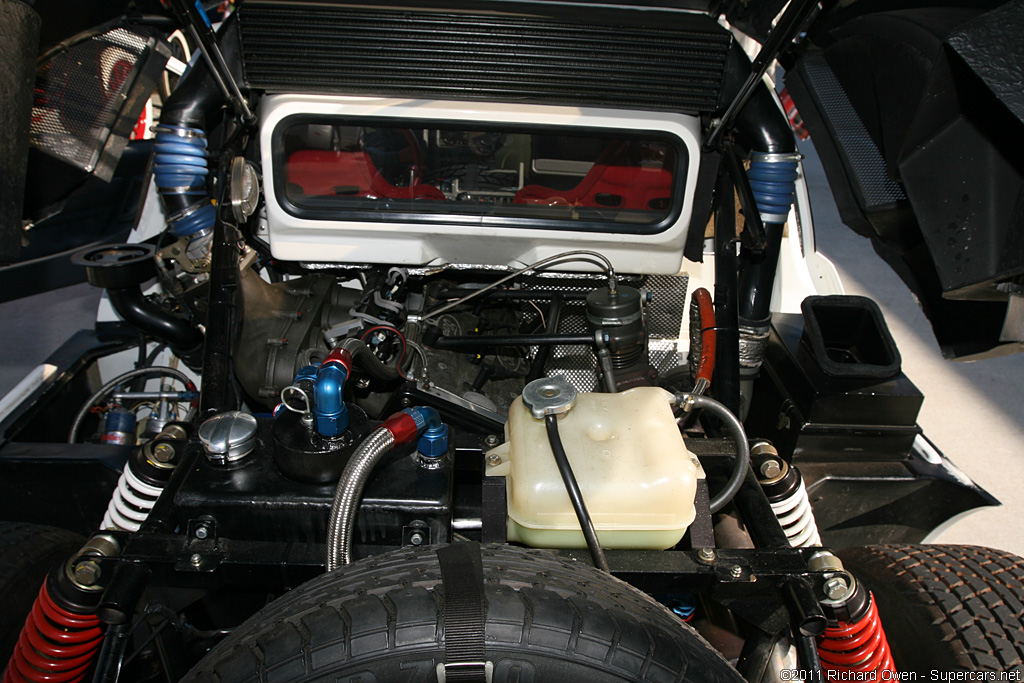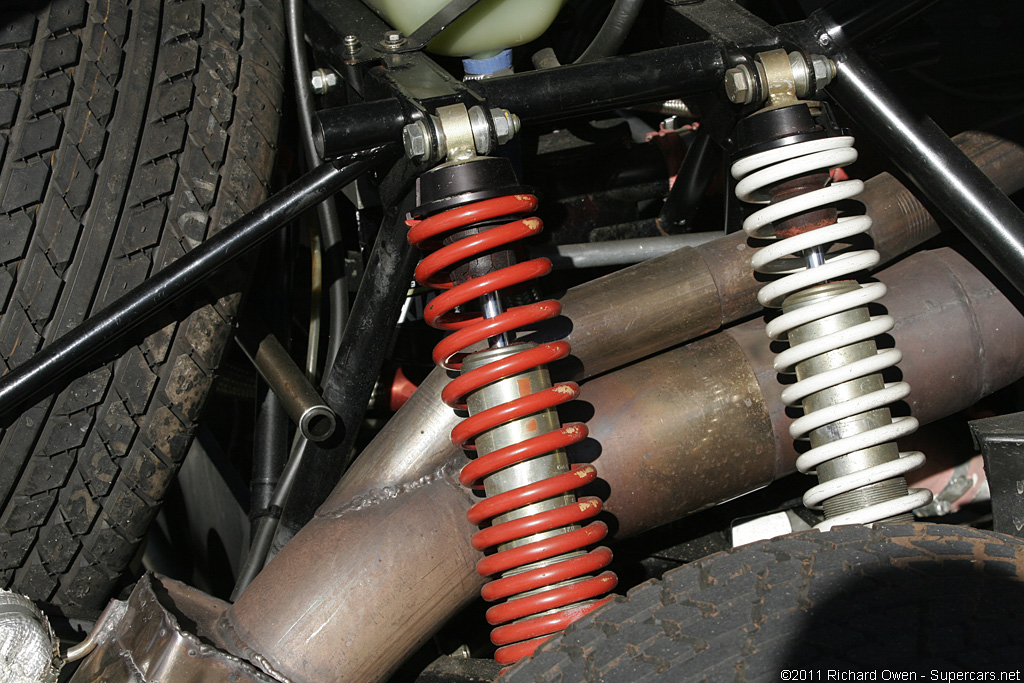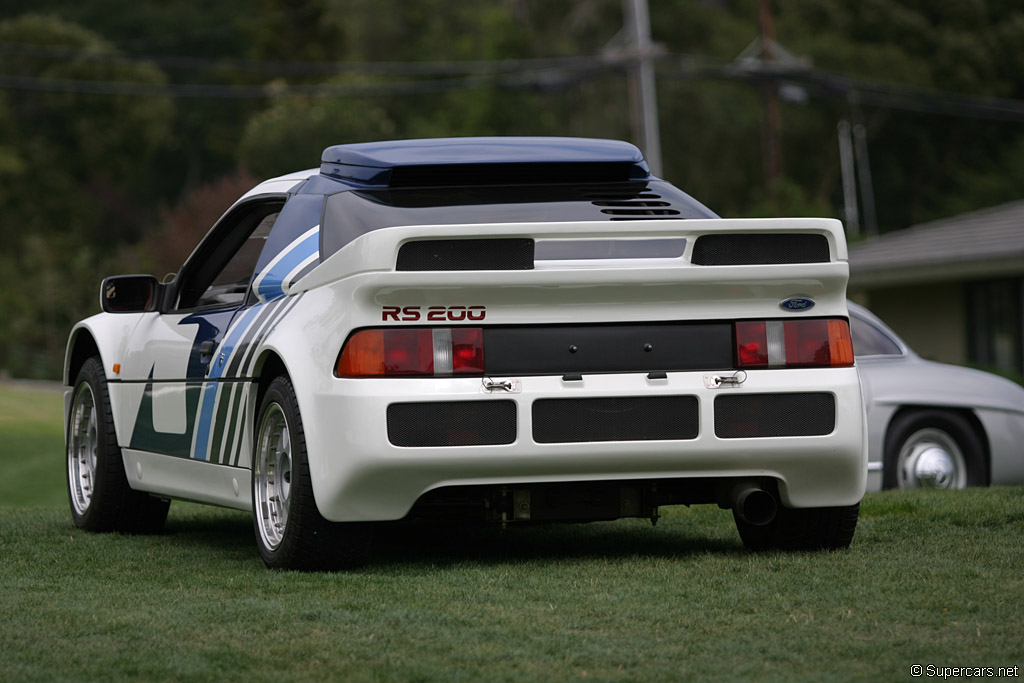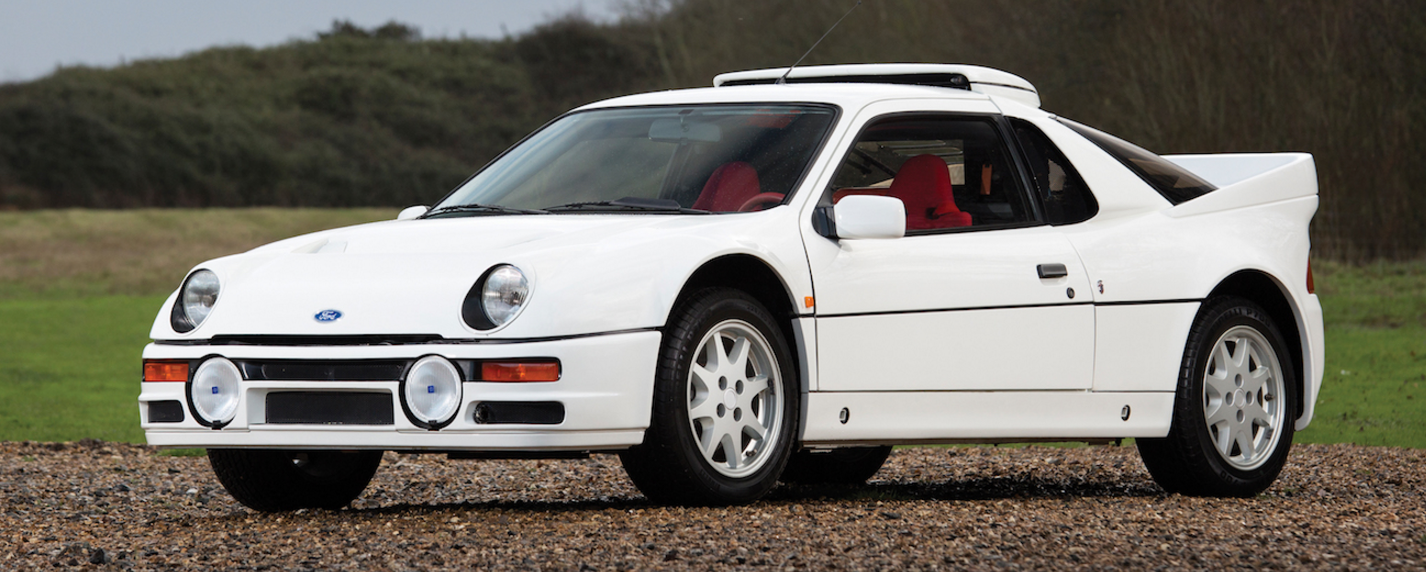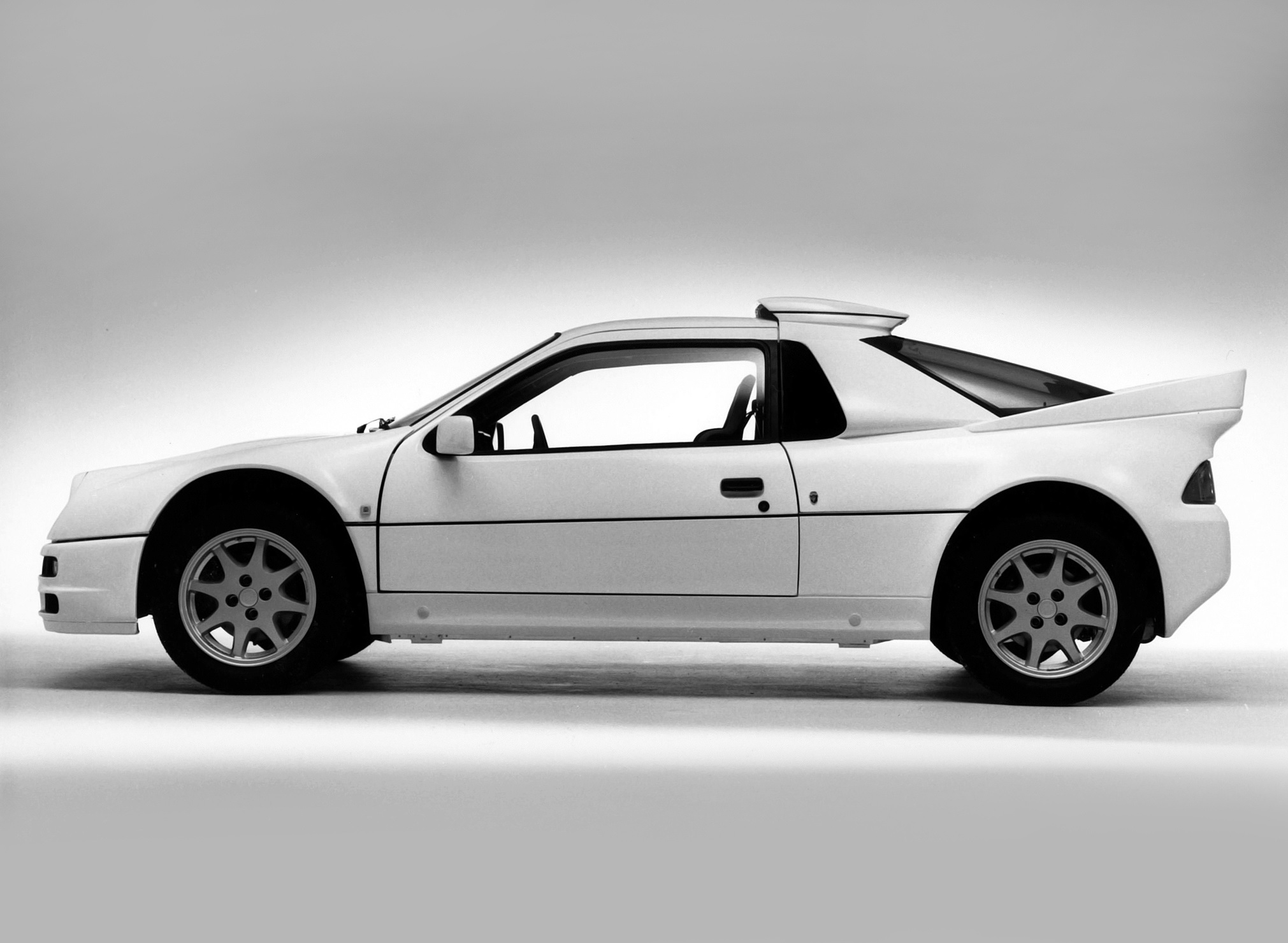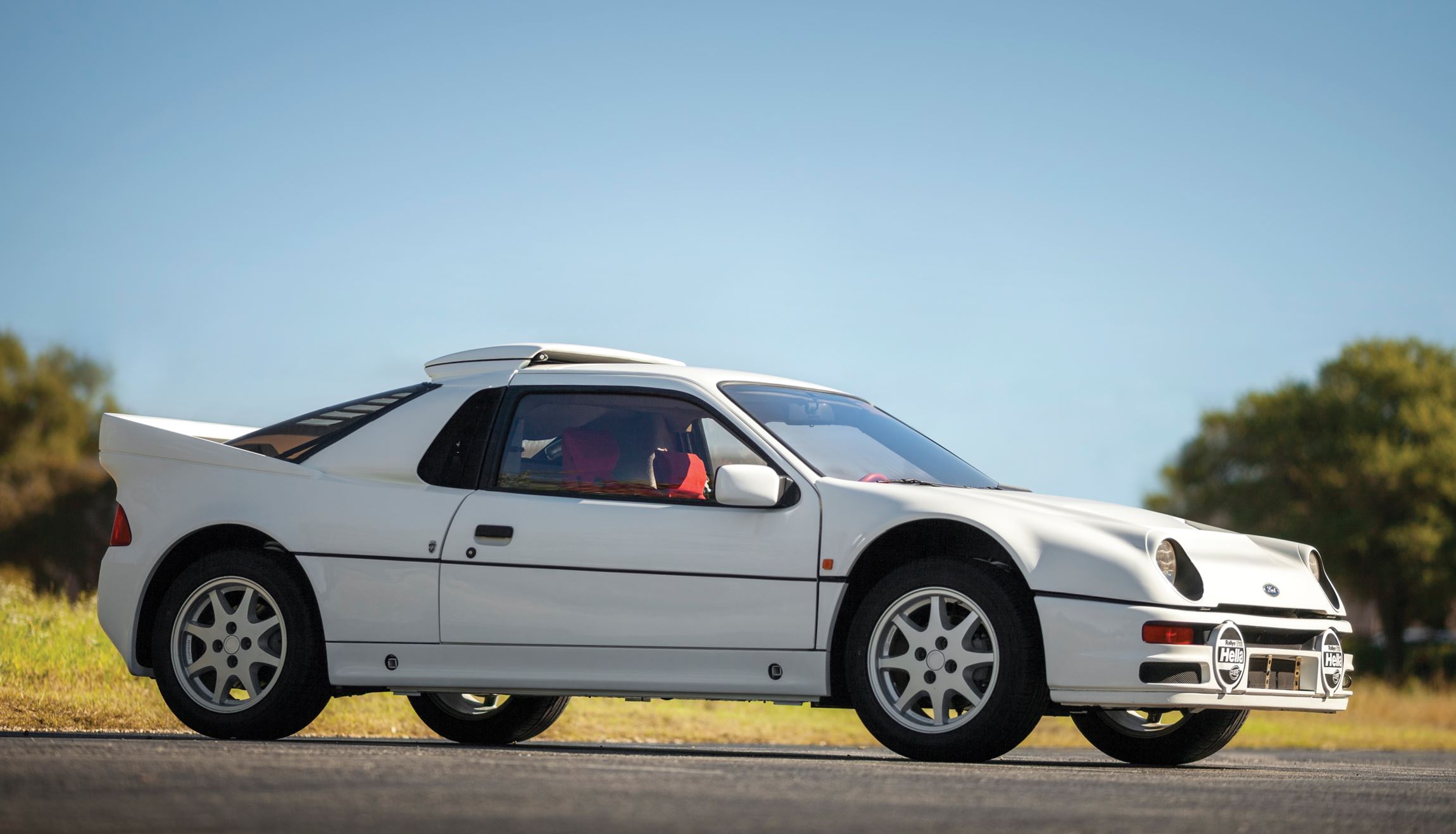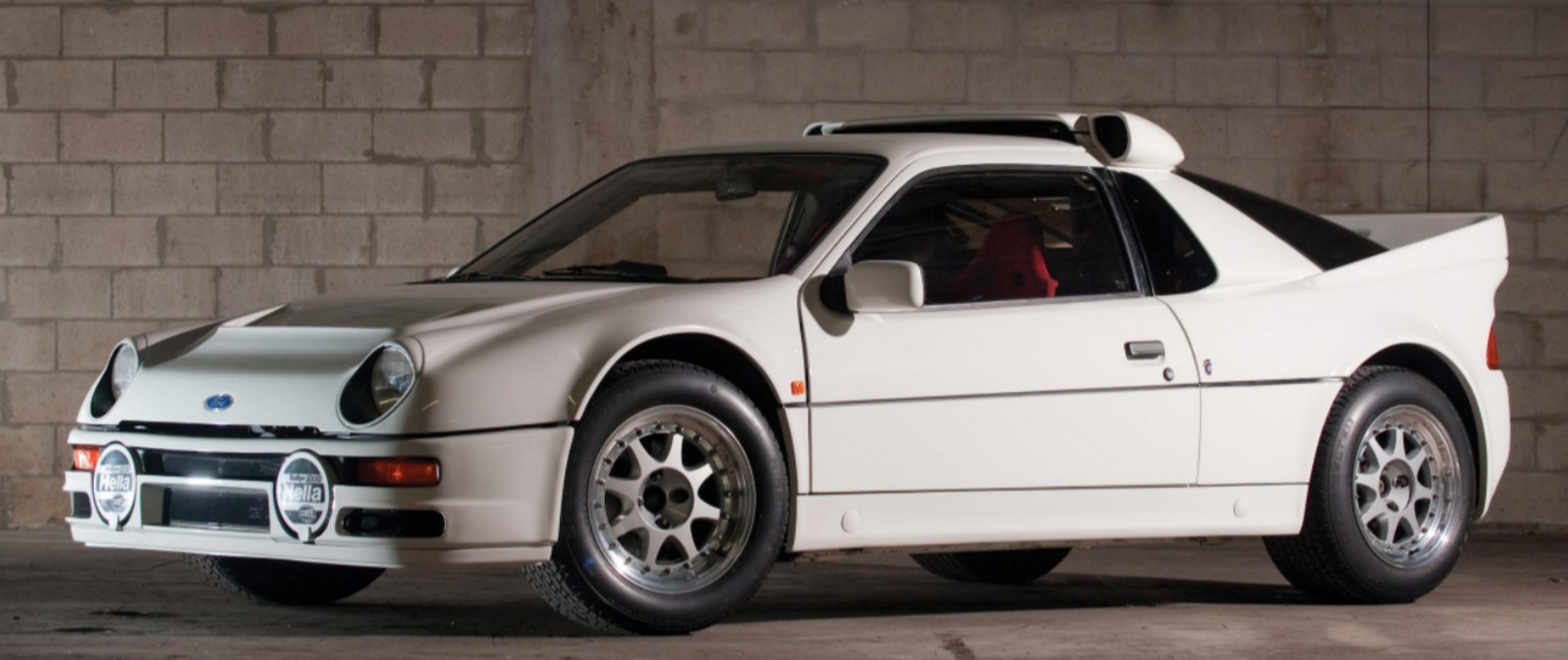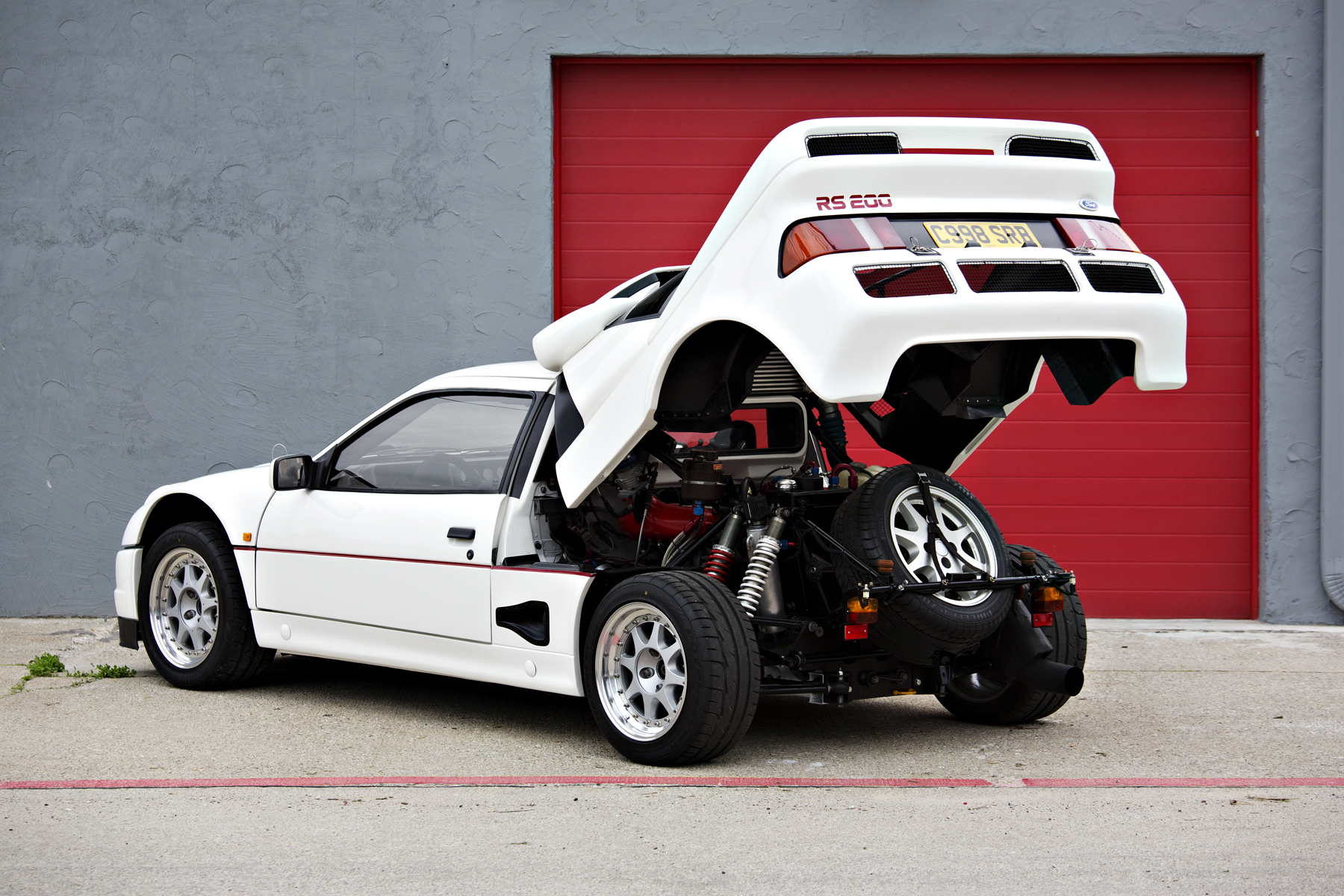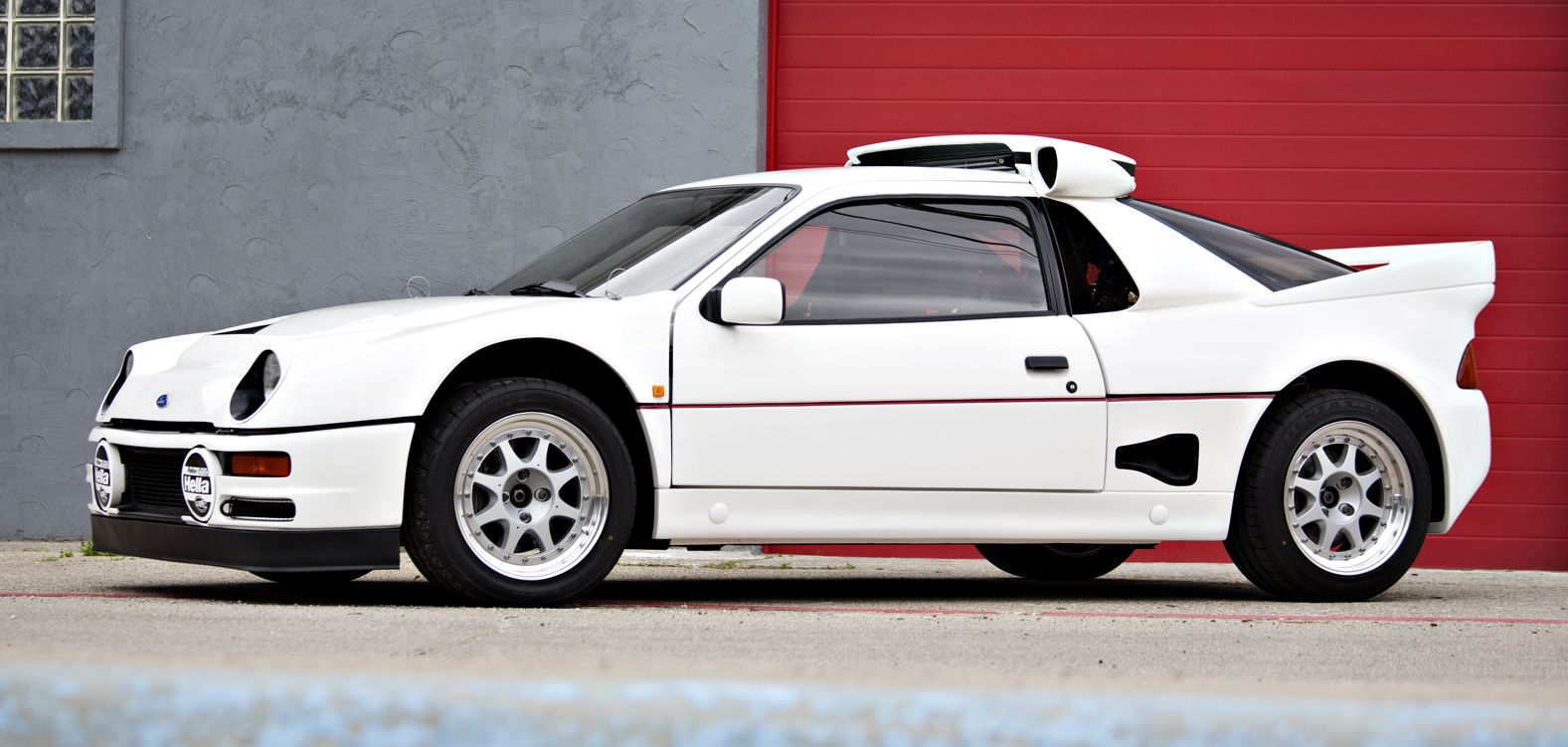1986 Ford RS200 Evolution Gallery
The Ford RS200 is a mid-engined, four-wheel drive sports car that was produced by Ford Europe from 1984 to 1986. The road-going RS200 was based on Ford’s Group B rally car and was designed to comply with FIA homologation regulations, which required 200 road legal versions be built. It was first displayed to the public at the Belfast Motor Show.
Power came from a 1.8 litre, single turbocharged Ford/Cosworth “BDT” engine producing 250 horsepower (190 kW) in road-going trim, and between 350 and 450 horsepower (340 kW) in racing trim; upgrade kits were available for road-going versions to boost power output to over 300 horsepower (220 kW). Although the RS had the balance and poise necessary to be competitive, its power-to-weight ratio was poor by comparison, and its engine produced notorious low-RPM lag, making it difficult to drive and ultimately less competitive. Factory driver Kalle Grundel’s third-place finish at the 1986 WRC Rally of Sweden represented the vehicle’s best-ever finish in Group B rallying competition, although the model did see limited success outside of the ultra-competitive Group B class. However, only one event later, at the Rally de Portugal, a Ford RS200 was involved in one of the most dramatic accidents in WRC history, claiming the lives of 3 spectators and injuring many others.[1] Another Ford RS200 was crashed by Swiss Formula One driver Marc Surer against a tree during the 1986 Hessen-Rallye in Germany, killing his co-driver and friend Michel Wyder instantly.
Learn more about the 1986 Ford RS200 Evolution



















